Vlad Dracul – The curse of Immortality
It took several years, but finally my version of Vlad Dracul is finished. He is based on Reaper Miniatures Judas Bloodpsire by Werner Klocke. Why did it take me so long, you may ask? Well, I was stuck with his fancy headdress and only recently found a solution for the tiny pearls. I will elaborate on the headdress’s construction and my painting process.
Precious pearls and fabulous feathers
It all started with a Judas Bloodspire miniature by Reaper. I swapped the weapon and the head, removed some skulls from the armour and so on. I detailed these changes in another post. The pictures below show the situation before I added the pearls and proper horsehair.
The headdress was a real headache. The basic shape was easy enough: The original head is from the Gripping Beast Late Roman set and sports a flattish cap. All I had to do was to add the cone shaped part with Greenstuff. But what about the horsehair and the set jewel, that is clearly visible on the historical portrait of Vlad Dracul?
Initially I used a random bit that looked like a set jewel (I guess it was a sword hilt at some point) and a feather from the Agema Romans. I was reasonably happy with it, but then my wife asked: “You put so much effort in the hair, why not go all in and do the headdress as depicted?” Challenge accepted!
Microspheres are the ticket
In the end I had to sculpt the set jewel (I had no star shaped bitz), the five central pearls and order some nail art supplies for the smaller pearl band: Turns out 0.4mm metal microspheres to adorn nails are the perfect scale for pearls. I could see them being effective fruit or eyeballs, too.
I applied a thin layer of greenstuff and gently pushed some of the beads in. The only way to get them out of their pot was a moist brush. Tweezers came in handy, too. I was unable to perfectly align them, but I can live with it.
A toothbrush supplied the horsehair. I took a bushel of single strands, glued them together with a drop of superglue and affixed them to a pre-drilled hole in the cap.
Finally, I made an attempt to sculpt the emblem of the Order of the Dragon. The historical Vlad was a member, so I thought this would be a nice detail. Fiddly at that scale, but I think it looks the part. I had to do it in stages. First the main body, then head and wings. The string came last.
This seasons colour: purple!
The paint job was fairly straight forward. I knew I wanted a reduced palette featuring purple and red. I also wanted to push contrast more than I would usually do and lastly I wanted to practice two-brush blending (one brush with paint, one just moist; apply paint and feather the edge with the moist brush).
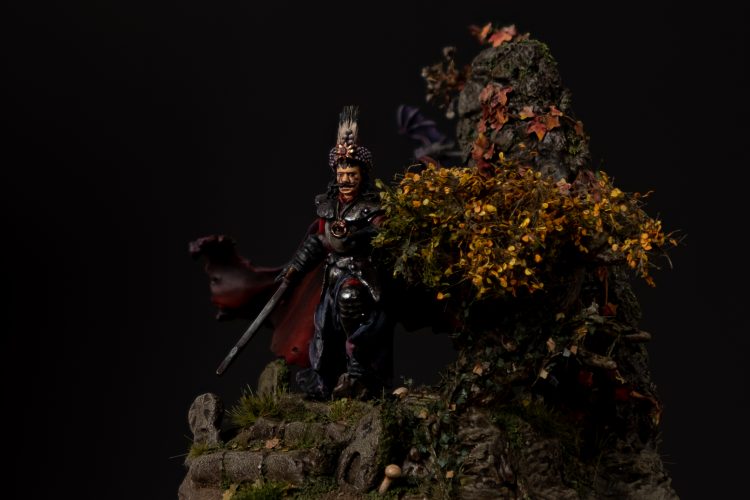
Colours and mediums used
I used a mixture of Vallejo and Reaper paints, plus Army Painter and GW washes. I also use the Vallejo Glaze medium with all non-wash paints. It makes paints more translucent and slightly extends the drying time. Usually I go for a 50:50 ratio. If it is not quite there a bit of water can help to get the consistency right.
My process
The process is as follows: I apply the base colours and then mix on the wet palette a lighter and darker tone than the base colour. I first apply shadows and go quite dark. Then I feather the edges. Next I apply the highlights and, once more, feather the edges. Not dark or not light enough in some areas? Easy, just go back in with the glazes until it is. With a wet palette this is a fairly relaxed way of painting. You only have to be quick feathering the edges, so work in one area at a time.
Controlled washes are your friend
I used the Army Painter Purple Tone on almost all areas, but restricted to the shadows. The idea was to draw it all together. So the Vlad Dracul’s face is shaded with purple, his red cloak has purple in the shadows, so does the armour. This will work, too, with a thin glaze or even an ink. Both will result in a cleaner and more vibrant shadow colour, so up to you.
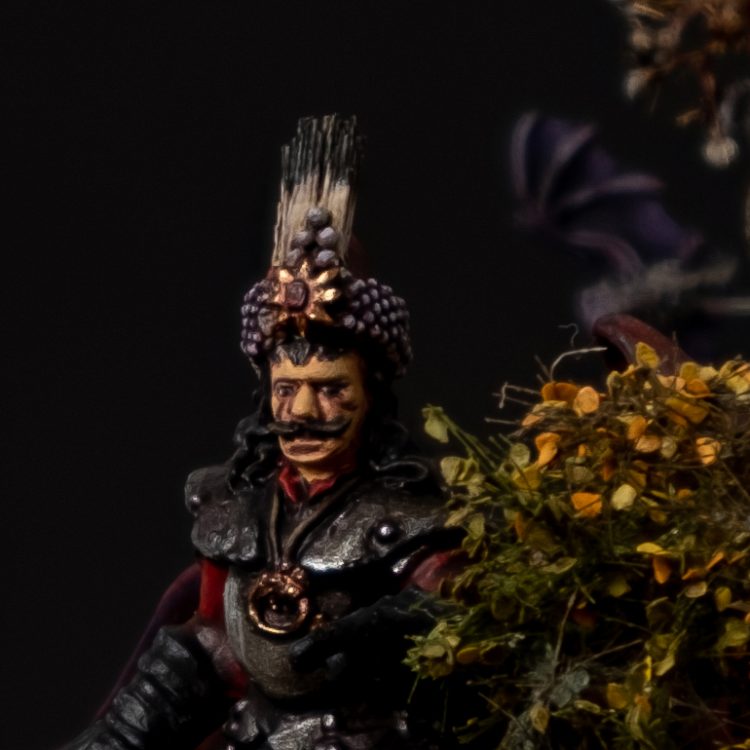
Red, a difficult colour
You may know that red is actually a hard colour to highlight. If you add white it gets pink, when you add yellow it gets orange. So the trick is to just go darker with your shadows and use a nice red as your final highlight. In my case Reaper Blood Red. You can add a finally highlight with a tiny bit of yellow added to the red. At glaze consistency, it won’t change the red to orange.
The shadows are a dark cold purple mixed with black. The cold and warm colours work well together and increase contrast further.
I also added red to the outside of Vlad Dracul’s cloak. Not in the shadows, but as a very subtle colour transition towards the top of the cloak. This is just a very thin glaze and adds interest.
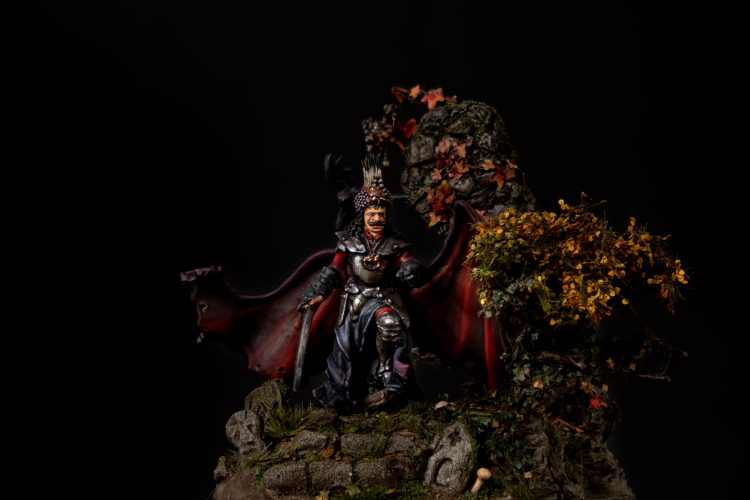
I hope you like how my semi-historical version of Vlad Dracul turned out. I was very pleased to learn that he was featured in a new Vlogcast format by Reaper Miniatures “ReaperLand”. The made up a cool alternative background story for the mini, so check it out. They also feature other paint jobs from the community in each episode, so lots of inspiration to gain. Sharp teeth or not, wield your brush with honour!
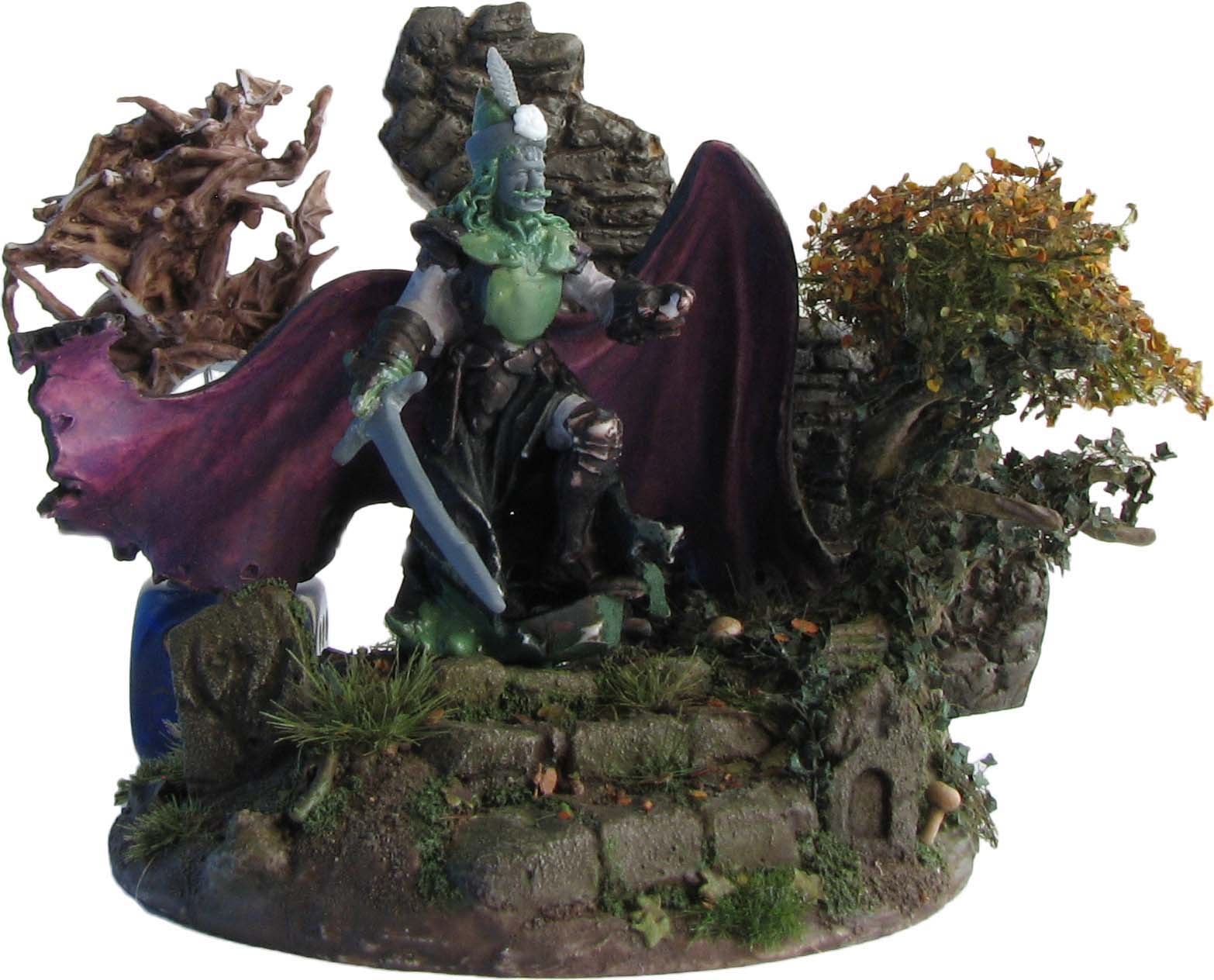
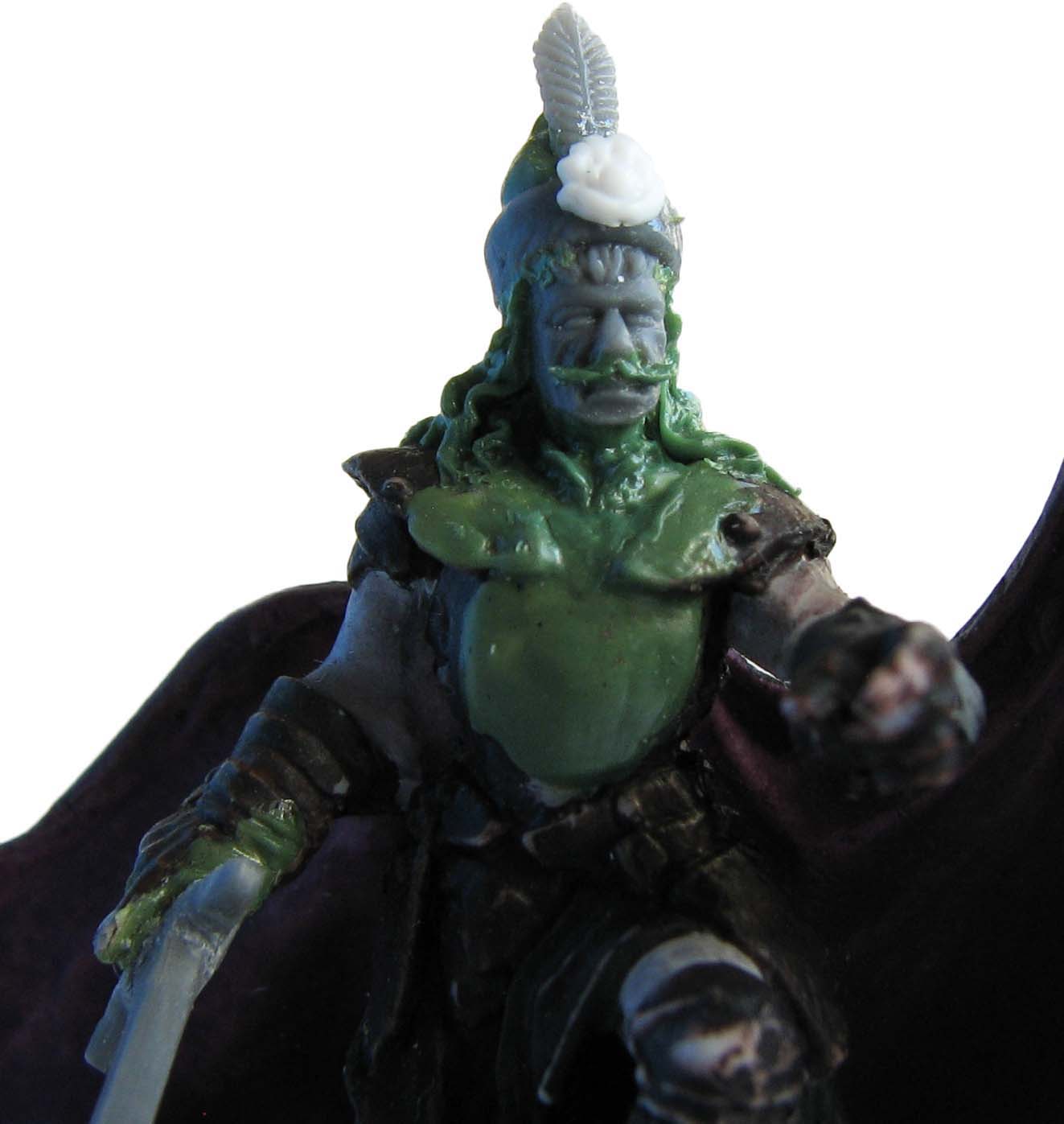


Very impressive – a really nice project in the end
Thank you very much. It took quite along time, but I am glad he his done and I am glad I did it in the first place. I intend to make a historical counterpart, too, using the Perry foot knight models.
Nicely done post and mini
Thank you Mark, much appreciated.
Very nice job! I do wish you had bigger pictures so that we could see more detail
Thank you, glad you like him. I inserted links to the media.